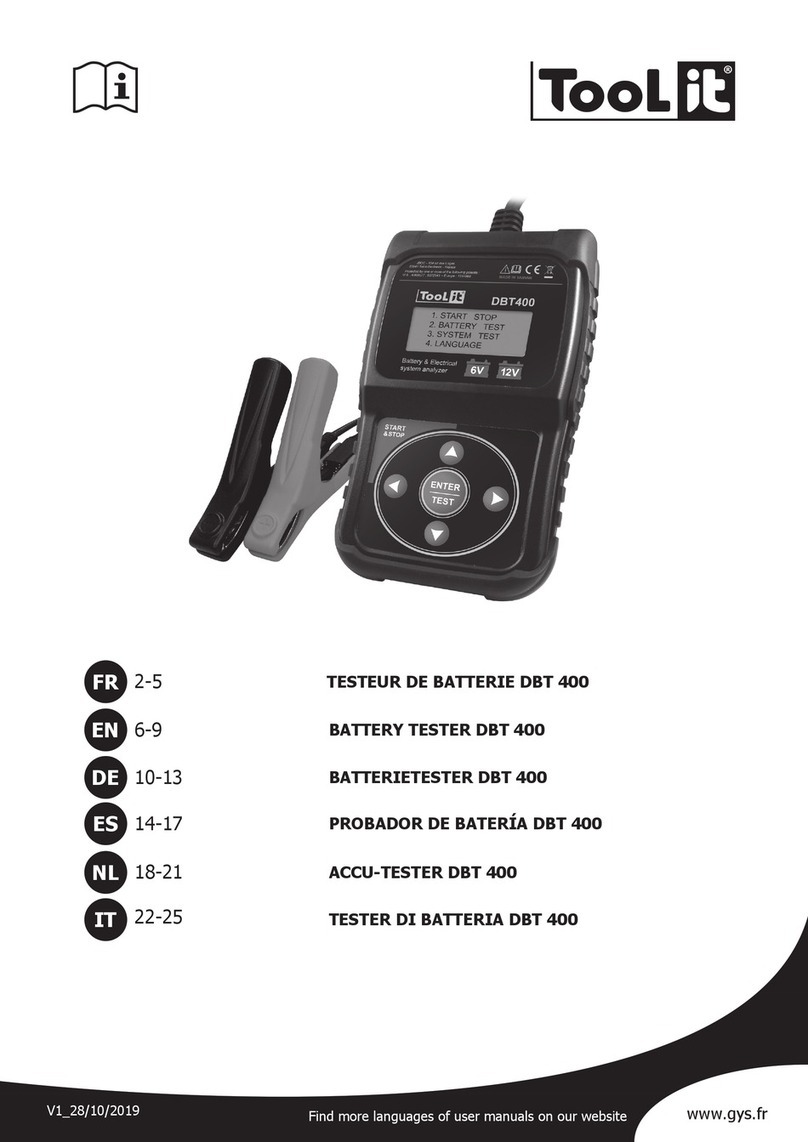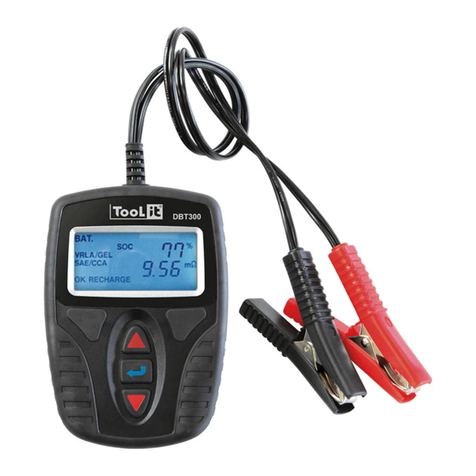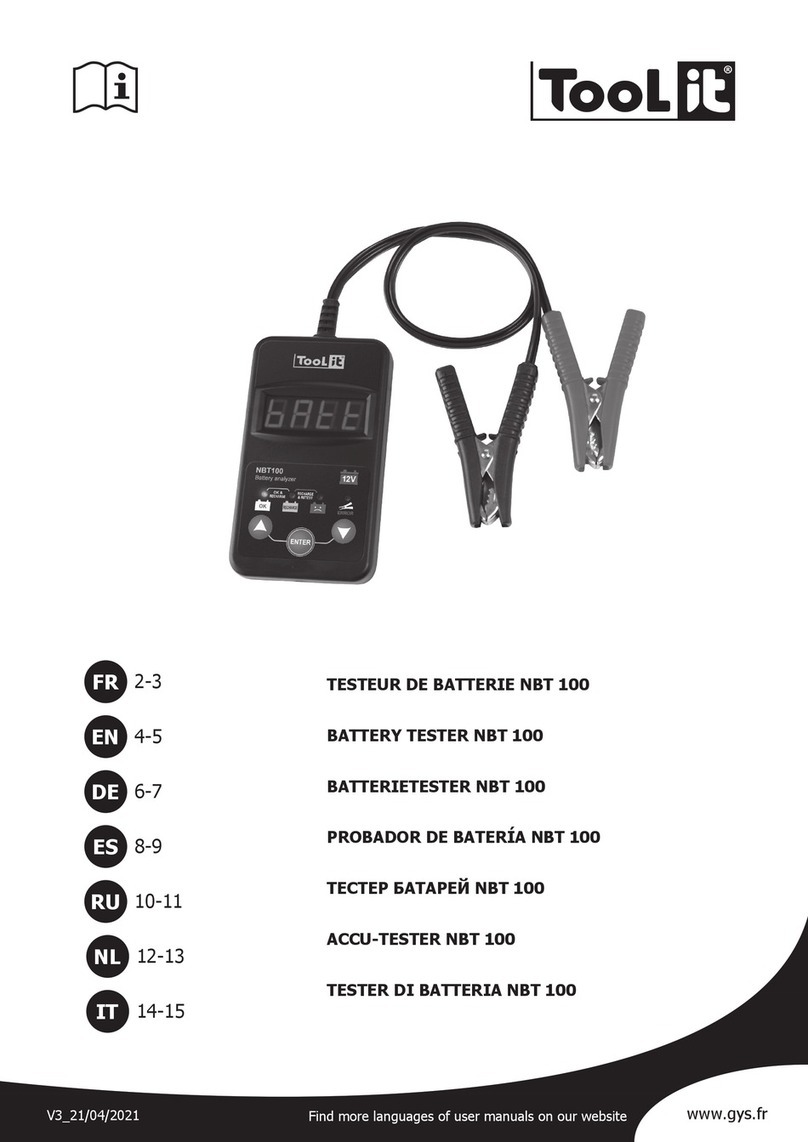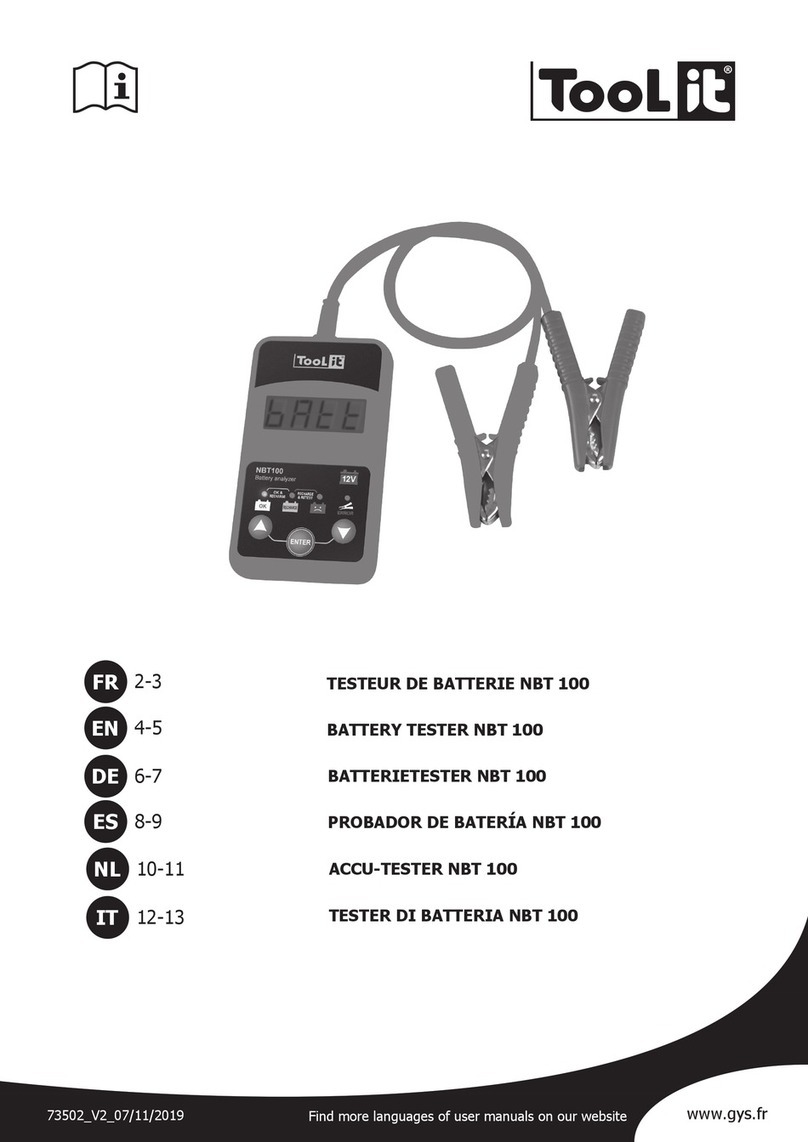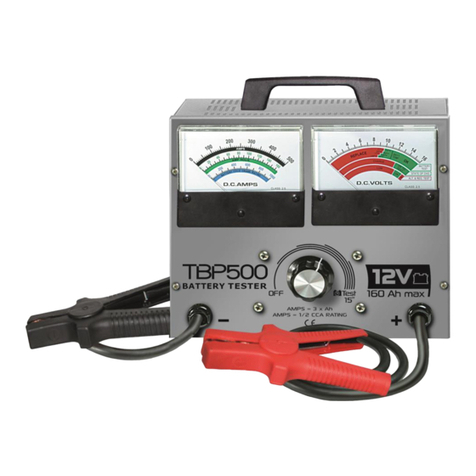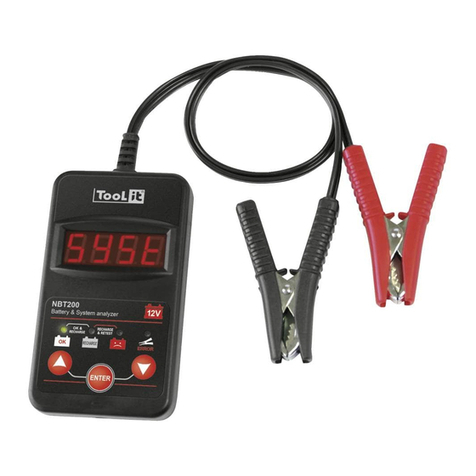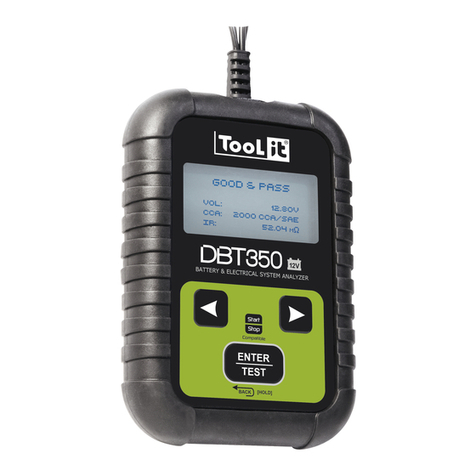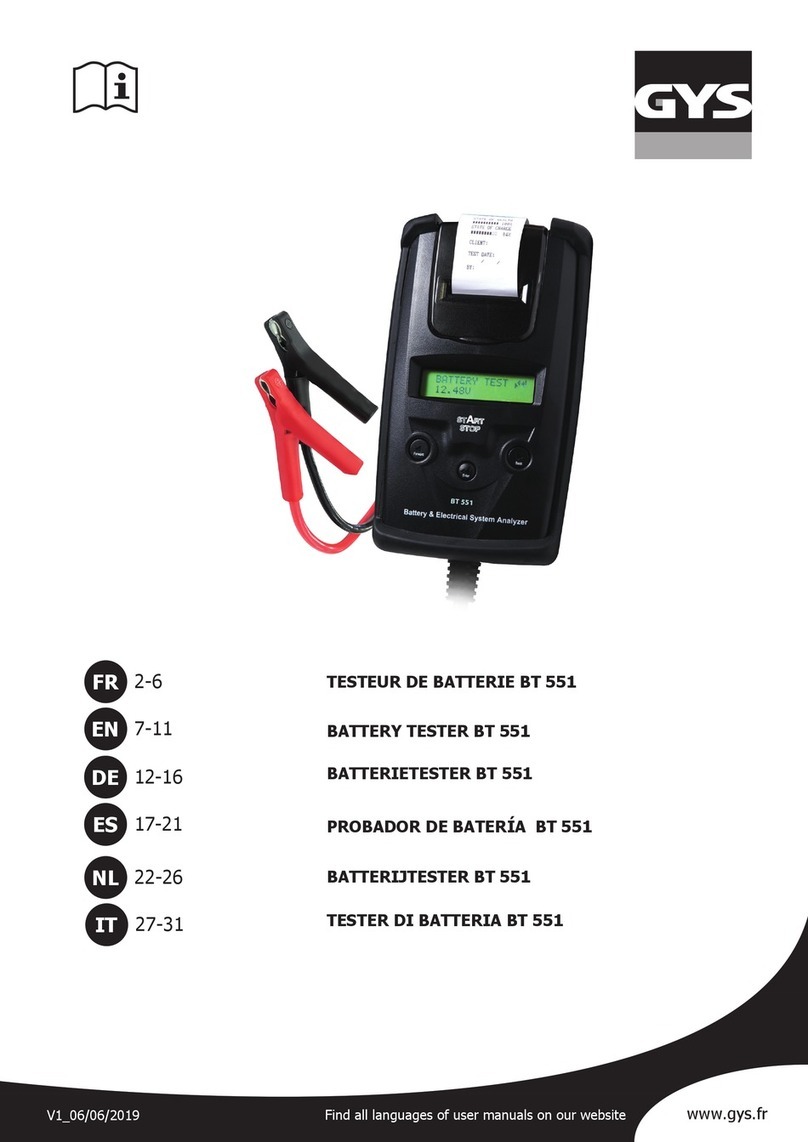
6
PBT 824 FR
Notice originale
Tension basse de démarrage lorsque
le test est eectué avec le moteur au
ralenti
ALT. IDLE VOLTS
xx.xx V FAIBLE
L’alternateur ne procure pas susamment de cou-
rant à la batterie. Vérier les courroies, et s’as-
surer que l’alternateur tourne lorsque le moteur
est en marche. Si les courroies glissent ou sont
brisées, les remplacer et faire le test à nouveau.
Vérier la connexion entre l’alternateur et la bat-
terie. Si la connexion est mauvaise, nettoyer ou
remplacer le câble et faire le test à nouveau. Si les
courroies et la connexion sont en bonne condition,
remplacer l’alternateur.
5. Le testeur demandera «ALLUMEZ CONSOM ET PRESSEZ ENTER». Allumer le chauage au maximum (chaleur),
les phares de route et les feux arrières. Ne pas allumer de charges cycliques telles que la climatisation ou les
essuie-glaces.
6. Lorsque le test est eectué, faire tourner le moteur à 2500 tr/min pendant 15 secondes.
7. Appuyer sur «ENTRÉE» , l’ondulation du système de charge apparait. L’un des trois résultats de test s’ache :
Résultats achés Analyse
Ondulation détectée normale Les diodes fonctionnent bien dans l’alternateur/démarreur
Aucune ondulation détectée Aucune ondulation détectée. Disfonctionnement de l’alternateur. Le
remplacer.
Intensité d’ondulation haute
Une ou plusieurs diodes ne fonctionnent pas ou sont endommagées.
S’assurer que le support de l’alternateur est bien placé et que les
courroies fonctionnent correctement. Si c’est le cas, remplacer
l’alternateur
8. Appuyer sur «ENTRÉE», pour continuer le test de système de charge avec les consommateurs en marche
(phares, chauage ...).
• Résultat du test de système de charge avec consommateurs en marche
Cas Résultats achés Analyse
Haute tension de démarrage lorsque le
test est eectué avec les
consommateurs en marche
ALT. CHARGE
DES VOLTS
xx.xx V HAUT
La tension de sortie de l’alternateur est anor-
malement élevée. Vérier qu’il n’y a pas de
problèmes de connexions. Si non, remplacer
l’alternateur.
Tension de démarrage normale lorsque
le test est eectué avec les
consommateurs en marche
ALT. CHARGE
DES VOLTS
xx.xx V NORMAL
La sortie de tension de l’alternateur est
normale. Aucun problème n’est détecté.
Tension basse de démarrage lorsque
le test est eectué avec les
consommateurs en marche
ALT. CHARGE
DES VOLTS
xx.xx V BAS
L’alternateur ne procure pas susamment de
courant pour la charge du système électrique
et la batterie. Vérier les courroies, et s’assurer
que l’alternateur tourne lorsque le moteur est en
marche. Si les courroies glissent ou sont brisées,
remplacer les courroies et faire le test à nouveau.
Vérier la connexion entre l’alternateur et la
batterie. Si la connexion est mauvaise, nettoyer
ou remplacer le câble et faire le test à nouveau.
Si les courroies et la connexion sont en bon état,
remplacer l’alternateur.
9. Appuyer sur «ENTRÉE», lorsque le test du système est terminé. Eteindre tous les consommateurs (chauage, phares
...) Appuyer sur « ENTREE » pour lire et/ou imprimer les résultats.
TEST EN VEHICULE
Ceci est une combinaison du test de la batterie et du test du système. En choisissant «test en vehicule» le testeur fait
automatiquement l’ensemble des tests. Les résultats des tests sont achés sur un seul et même ticket. Se référer aux
procédures de test ci-dessus ou suivre les instructions sur l’écran du testeur.

